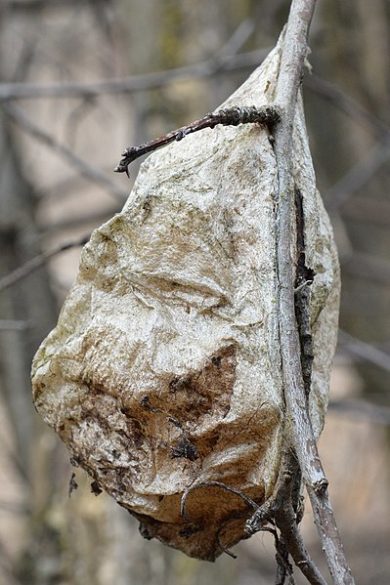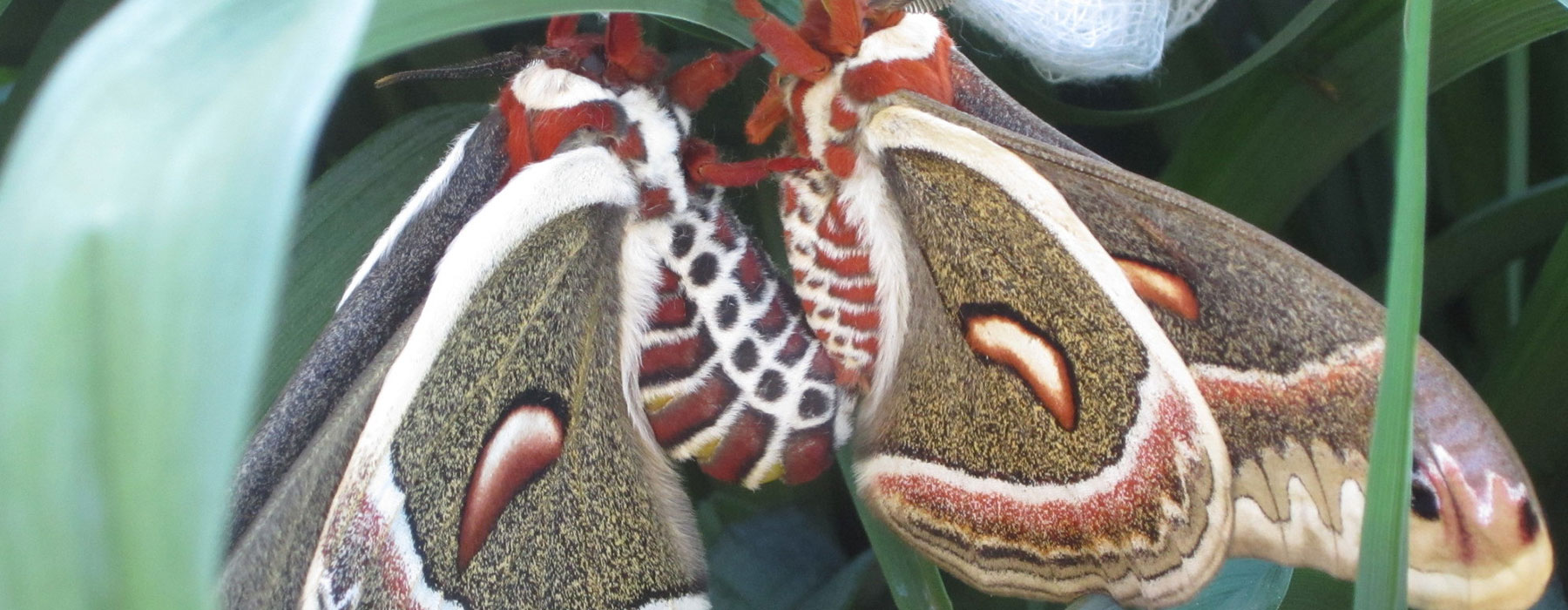This richly colored, nocturnal beauty is North America’s largest silkmoth. Zadock Thompson, Vermont’s first naturalist, described this species in Vermont as a “butterfly” when he found a cocoon in March 1840 in a “pine plain” in Burlington and watched it eclose in captivity.
Females release an airborne pheromone that is capable of attracting males from miles. Mating occurs during the early morning hours after midnight. Females lay rows of 2-6 eggs on both sides of the leaves of small host trees or shrubs. Eggs hatch in 10-14 days. Young caterpillars feed in groups on leaves; older caterpillars are solitary. The cocoon is attached along its full length to a twig; to escape predation by rodents and birds, the cocoon is usually constructed in a dark, protected area. In Vermont cocoon observed on American Beech, Buttonbush, and Apple. Overwinters as pupae. One eclosure date reported in Vermont: 7 June 2007, Royalton (S. Faccio). Thompson (1842) found a cocoon on a bush in a “pine plain” in Burlington in March 1840. It eclosed on 20 April after being kept in a warm room. The female laid 200 eggs over its 7-day lifespan.
Cocoon Identification

© Ryan Hodnett
Cocoons are silk, tan to dark brown in color. They are often located in dark, protected areas. They are attached lengthwise along the stems or branches of host plants (see below) or plants nearby host plants. In Vermont, cocoons have been observed on American Beech, Buttonbush, and Apple.
Cocoons are attached lengthwise to twigs in exposed areas (usually tighter cocoons) or spun in the grass at the base of a host plant (usually baggier cocoons). Searching for baggier cocoons at the base of isolated cherry and apple trees growing along fences and roadsides can be useful.
Conservation Status
Resident – uncommon
Vermont S3 (vulnerable)
Global G5 (secure)
Distribution and Habitat
Adaptable and can be found in a variety of successional habitats including urban and suburban environments as well as deciduous woodlands. Caterpillars feed on various trees and shrubs including Box Elder (Acer negundo), Sugar Maple (Acer saccharum), Apples (Malus), Willows (Salix) and many others. Found sporadically throughout Vermont, the Cecropia Silkmoth appears to be neither common nor abundant.
Host Plants in Vermont
- Aceraceae – Maples
- Betulaceae – Birches and hazelnuts
- Berberidaceae – Barberry
- Caprifoliaceae – found on Sambucus (elderberries)
- Fagaceae – Beech and White Oak
- Oleaceae – Ashes and lilacs
- Pinaceae – Picea (spruces)
- Rosaceae – Serviceberries, Hawthorne, Apples, Cherries, Blackberries and Raspberries, American Mountain Ash, Spiraea
- Salicaceae – Willows
- Saxifragaeae – Gooseberries
- Tiliaceae – Basswood and Linden
- Ulmaceae – Elms
- Vitaceae – Virginia Creeper







